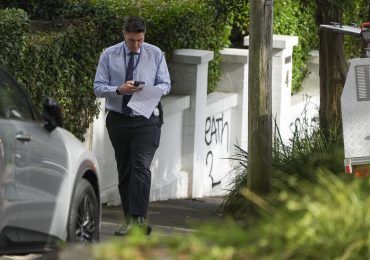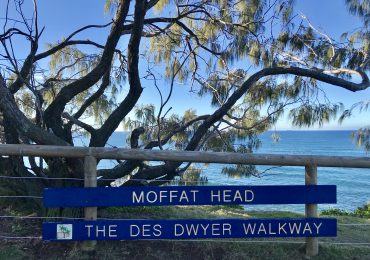SATELLITE images have exposed Iran’s terrifying efforts to carve out a secret, iron-clad nuclear site buried in the mountains.
It follows warnings from a nuclear weapons expert that Tehran could produce a bomb in as little as six months from one of its “covert” nuclear hubs.
Iranian technicians work at one of the country’s uranium sites
The Natanz nuclear facility pictured in 2020
Institute for Science and International SecurityRecent ISIS satellite pics of Nafanz nuclear site – nestled in the Zagros mountains[/caption]
When Israel launched its calculated precision strike on the Iranian city of Isfahan last week, many thought the nuclear site there was a target.
Despite reports that no nuclear hubs were struck, a nearby air base did suffer hefty damage unveiled in leaked images.
Now, as tensions in the Middle East continue to swirl, the West may have more insight into the nature of Iran’s nuclear plans just an hour away – at the Natanz base.
Tehran is thought to harbour considerable stores of the element – just shy of the weapons grade level needed to make an atomic bomb.
If it did get its hands on such a weapon, its arch enemy Israel would likely be at the top of the list of targets.
Natanz, shielded by armed IRGC troops, anti-aircraft defences and perimeter-wide fencing, is Iran’s primary uranium enrichment facility.
Satellite photographs are exposing the hubbub of activity at the secretive fuel enrichment complex.
The snaps, shared by the Institute for Science and International Security (ISIS), reveal just how hard Iran is working to construct an indestructible, formidable nuclear base.
They include a series of images dating back as far as October 2022 documenting Tehran’s frantic efforts to reinforce the site.
Some experts worry Iran could be building a nuclear bomb – or hiding its efforts to do so – possibly inside the secretive bunker.
Policy director at Arms Control Association Kelsey Davenport previously warned: “Iran is sitting on the threshold of nuclear weapons; it can build a bomb more quickly than at any point in its history.”
She revealed that Tehran could carve out enough weapons-grade uranium for a nuclear bomb in as little as six months.
Iran’s reluctance to allow inspections by nuclear watchdogs or to cooperate with the 2015 Iran nuclear deal makes it incredibly difficult for the West to gage exactly where they are at.
And an underground site like Natanz, shielded by the Zagros mountains, would likely be beyond the range of foreign missiles in case of disaster.
Davenport described this as “a nightmare scenario that risks igniting a new escalatory spiral.”
AlamyIran’s capability to build a nuclear bomb has rapidly increased in recent years (file image)[/caption]
EPACentrifuge machines in the Natanz uranium enrichment facility[/caption]
SATELLITE IMAGES
Built around a complicated tunnel network, the complex is nestled into the Kuh-e Kolang Gaz La mountain – which translates as “Pickaxe Mountain”.
After years satellite images taken as recently as January show it is still under construction, as workers go about trying to make it invincible.
The tunnel complex is even deeper than at Iran’s other primary underground plant – the Fordow enrichment hub.
Some reports suggest it used to cover 100,000 square metres, was buried eight metres underground and surrounded by 2.5 metre-thick concrete walls.
With more entrances and no obvious ventilation shafts, it would be much harder to destroy that some of Iran’s other facilities.
Extra security areas have been added since 2022, as well as construction material stockpiles.
ISIS say the images show “efforts by Iran to increase the hardness and survivability of the site”.
Institute for Science and International SecuritySatellite pictures from October 2022 to January 2024 show the expanding site[/caption]
The underground rooms, they believe, are still being developed and pics from January show heavy machinery lining up around the site.
An older nuclear site at Natanz sat above ground, but was obliterated in the summer of 2021.
While Iran has not been able to replace it quickly, it is clearly aiming for a much more robust replacement.
International concerns have swirled over the site as Iran refuses to cooperate with terms laid out by the International Atomic Energy Agency (IAEA).
The Nuclear Threat Initiative, a non-profit security watchdog, thinks the huge Natanz complex could be made up of three different underground buildings.
It is also believed to be home to three Chinese-supplied research reactors which work on fuel production as well as other nuclear programs.
Since just 2019, Iran has increased its amount of enriched uranium from 997kg to 5,525kg.
In the past year alone it has seen a 38 per cent increase.
While Tehran has said it has no plans to weaponise the uranium, officials have openly bragged about their ability to do so.
Britain and the US have spent years trying to figure out how to limit Iran’s nuclear ambitions without going to war.
But recent bubbling tensions in the Middle East and reports that Israel could strike Iranian nuclear sites are doing nothing to limit escalations.
APSatellite image of Iran’s Isfahan nuclear site on April 4[/caption]
Iran has a spate of dangerous nuclear sites, some of which are hidden underground, pictured: Isfahan power plant
Iran’s enriched uranium timeline
IRAN’s enriched uranium progress has picked up since the collapse of the Joint Comprehensive Plan of Action (JCPOA), known as the Iran nuclear deal, in 2018.
Signed in 2015, it saw Western sanctions against Iran lessened in exchange for more transparency over its nuclear facilities.
Those that signed it included the UK, US, EU, China and Russia.
Former president Donald Trump, at the time vying to oust Barack Obama, branded it “the worst deal ever”.
In 2018, then president, he pulled the US out of the deal.
As a result the treaty essentially collapsed and Biden’s attempts to revive it have failed.
While Tehran under the deal had to agree not to stockpile enough enriched uranium for a bomb – it has since pulled out of certain aspects blaming US withdrawal.
In 2020 it resumed enriching uranium to 20 per cent at its Fordow plant.
In 2021 it began enriching it to 60 per cent.
And by February this year IAEA inspectors noted uranium particles enriched to 83.7 per cent.
It needs to hit 90 per cent to be sufficient for weapon-making.
It remains difficult to know exactly where Iran is enriching uranium, by how much and at what speed because of a lack of transparency in the country for international inspections.
Iran is currently not allowing inspections, citing security concerns over a possible Israeli strike.









